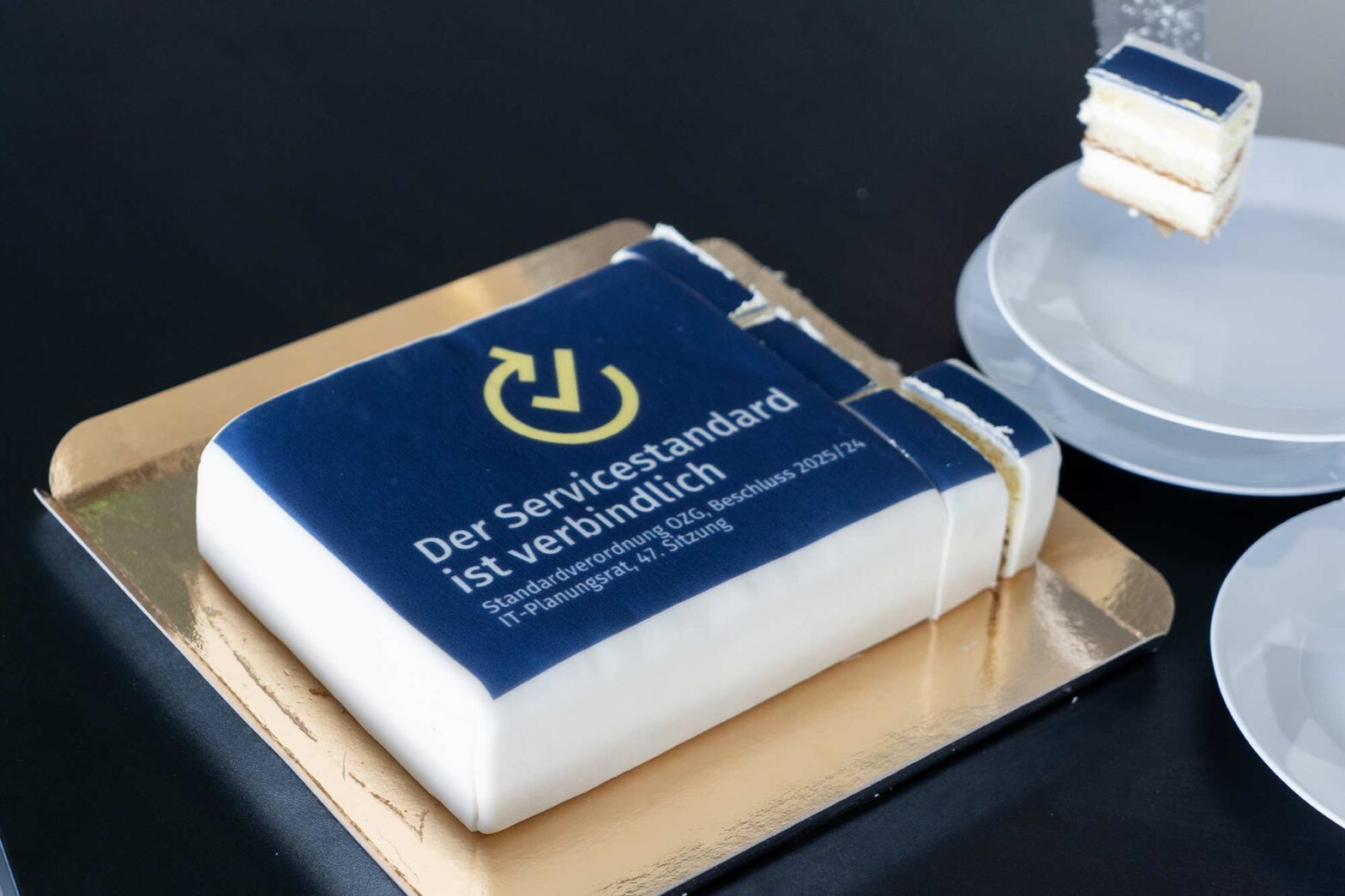Last Thursday’s all-hands meeting, I stated that our recent Service Standard achievements deserve a cake. The cake was served on Monday, and it was gone by Tuesday.
I was a little curious to see what the quality of the print would be like. It was alright. But the cake was very well received in the office and the related Slack channel.
‘Move fast and bake things’, my colleague said, which needs to be a sticker. I will need to add this to the list of stick ideas to work on on my next train ride.
Participating in service team interviews
For our work on the crossover umbrella brand, I participated in an interview. My colleague Anne led the interview, while I took notes. We heard from a digital leader at a state-level digital agency about the challenges they observe with implementing elements of the brand.
The smallest, most underfunded and least capable government entities have to be given the best possible tools considering their circumstances. We need to ensure that they get the finest building blocks that already incorporate most of the good practices that we demand through the Service Standard. And always, the higher level of government needs to model behaviours to inspire lower-level government entities to follow suit.
Workshopping new projects
On Tuesday, I had the chance to participate in an exploration workshop for a new possible project we might be doing with an internal government at the provider. We had different stakeholders in the room, and it was fascinating to see a project brought to our attention that could benefit from more ongoing user-centred design activities. In this case, it was not user feedback to start the conversation, but a suggestion from a state secretary about what probably needed improvement to the user experience. I’m curious how we move forward and whether we might work on this. As always, I do enjoy being exposed to many parts of government and learning about projects created in very different settings compared to ours.
Reflecting on temporary disability and the state of digital healthcare
The past 5 weeks have been challenging and educational for me. Since breaking my dominant hand in a bike accident, I’ve been wearing a cast. I had to deal with the most stubborn and analogue health care and insurance system while also being amazed by assistive technologies and the digital health record file. I experienced bits of the future blended with legacy practices of the last century.
The good: assistive tech advancement
For my work, which includes a lot of writing and communicating over text, I am heavily using speech-to-text tools. Apple’s integrated dictation does a great job on mobile and desktop. Switching between English and German is quick. It only occasionally struggles with specific phrases and writes “use a research” when I mean “user research.” Or maybe, I mumble. When writing speaker notes for talks, I have been dictating them even faster than typing things out. Also, the ‘swipe type’ functionality on the phone is a fantastic invention for these circumstances.
The bad: un-synced 20th century systems
The 2 doctors’ practices I visited gave me multiple paper forms to fill out. As I had already submitted all information digitally, I asked the receptionist if that would be necessary. They checked with the doctor, and they insisted. I spent the next 40 minutes slowly transferring the information from my phone to paper with barely legible letters.
At the hospital, I received a chuckle when asking if I could have my X-ray images copied into my digital health record file. It will only be mandatory by October, so the system has not been upgraded yet. “You can come back next week and pick up a CD”, I was told. So, I did and waited over 30 minutes for a CD to be burned. I then had to find a computer with a CD drive to find the images in an obscure file format. Getting them into my digital health record file took me several hours.
The ugly: inaccessible forms and inflexible service providers
The public sector work accident insurance also sent me a proper pile of paper forms. At the time, my non-dominant hand started cramping after doing the job of 2 hands for a while, and it became difficult to write anything. I used VBG’s – the public sector’s joint accidenet insurance – online form to ask for a more accessible format – either an online form or at least a PDF version to fill out digitally with my speech-to-text setup. 5 days later, I received the response in my mailbox. The letter made things unmistakably clear: paper forms only. With millions of insured people and accidents handled, that seems exclusionary. I complained.
The outcomes
Members of my extended family rely on screen readers and voice input systems daily. The lived experience with a temporary disability gives me a better idea of how much assistive tech creates freedom. I am grateful for that perspective.
Also, my digital health record file is almost complete after gathering data from several doctors and converting and uploading everything. By doing so, I avoided multiple X-rays, saved hundreds of euros and myself some radiation. I got a glimpse of Germany’s digital future. I hope it arrives soon.
What’s next
This week has been short, and the next one will be busy.
We have the first peer review against the new service standard on Thursday morning. On Thursday afternoon and Friday morning, we will be running a workshop for and with the umbrella brand’s coordination circle.
And on Tuesday, we will run our annual delivery offsite day. On Monday, I will have lots still to repair for it.

